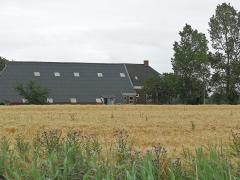Lessons from temporal and spatial patterns in global use of N and P fertilizer on cropland
Many high-income countries have experienced excessive nitrogen (N) and phosphorus (P) inputs from fertilizer and animal manure in crop production in the 1970s and 1980s. Landscapes have a nutrient memory, with soil residual P reserves that can be used by subsequent crops, while N can be delivered to rivers decades after its application. This article discusses differences in the history nutrient inputs between world regions, and lessons learnt in high-income countries for farm practice and policy in developing countries.
Nutrient imbalances
Farmers in high-income countries and China and India have built up a large reserve of residual soil P in cropland in recent decades. This surplus P contributes to an increased reserve of available P which can now be used by crops; as a result, the use of mineral P fertilizer has recently been decreasing in high-income countries even leading to negative soil P budgets in Europe.
In contrast to P, much of N surpluses are emitted to the environment via air and water and large quantities of N are transported in ground water, often with long travel times (decades and longer). In contrast to P, there is no decreasing trend in N fertilizer use; increasing N use efficiency and utilization of accumulated residual soil P allowed continued increases in crop yields. However, there are ecological risks associated with the excessive nutrient mobilization in the 1970s and 1980s.
Lessons learned
Landscapes have a memory for N and P; N concentrations in many rivers do not respond to increased agricultural N use efficiency, and European water quality is threatened by rapidly increasing N:P ratios. Many phytoplankton species causing harmful algal blooms have physiological adaptive strategies that favour them under conditions of elevated N : P conditions.
Developing countries can prevent such problems through integrated management of N, P and other nutrients accounting for residual soil P, by avoiding legacies associated with the type of past and continuing mismanagement of high-income countries.
Authors
Specifications
- Publication title
- Lessons from temporal and spatial patterns in global use of N and P fertilizer on cropland
- Publication date
- 13 January 2017
- Publication type
- Publication
- Magazine
- Scientific Reports, 7:40366
- Product number
- 2838




